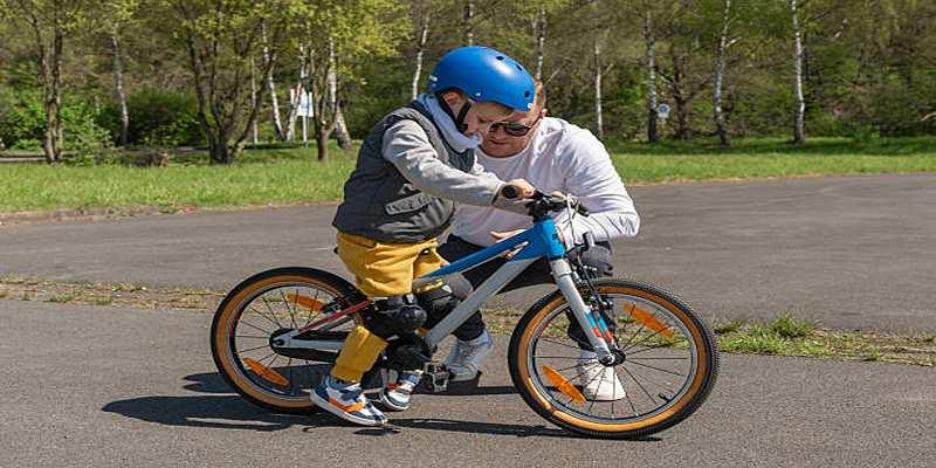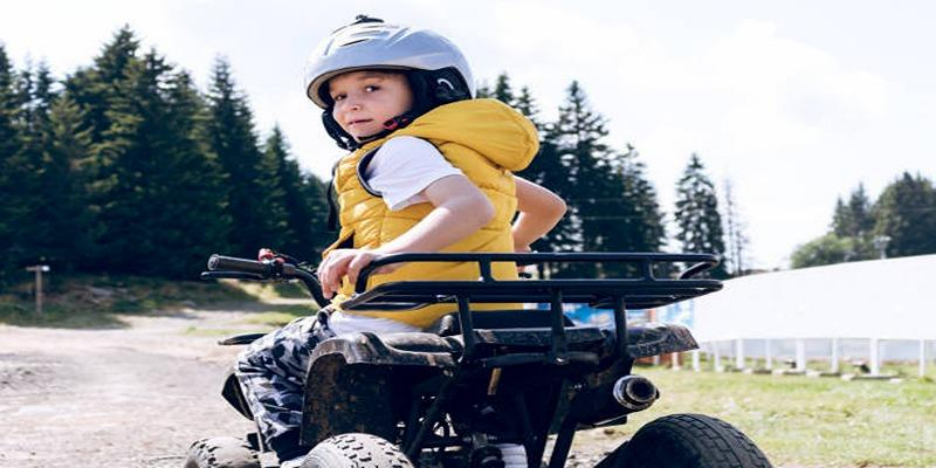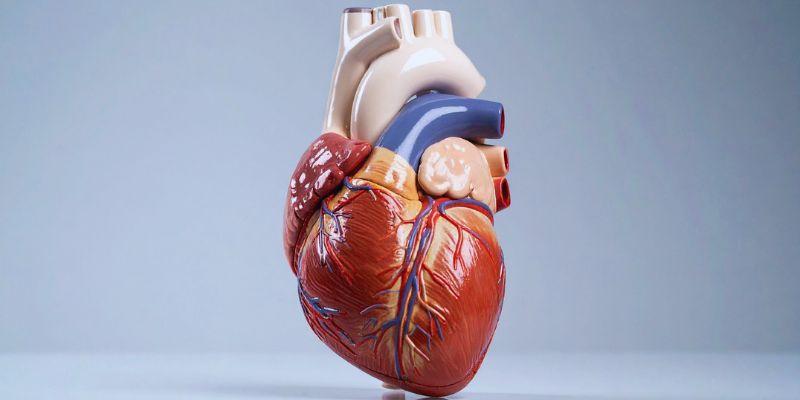Riding of ATVs and bikes is very enjoyable and exciting among the kids but safety can never be left behind. This guide will assist in offering useful tips on how to ensure children are safe when riding since they will understand how safety wear, instructions, and protection come in.
ATVs and bikes may carry risks with them that both the children and parents can be aware of to prevent accidents and injury. Some risks that are important will be:
Safety is a thing that should always be on your priority whenever you will ride your bicycles or even riding your ATVs. Observing proper precautionary measures can slow down the accidents and injuries. These are the required subcategories with significant safety precautions in order to have a great and safe experience.

Wearing the appropriate kind of safety equipment is a substantial factor every time one is out riding his ATV or bike. Helmets, knee pads, elbow pads and gloves should be able to cushion against an injury in the event one falls or there is a collision. Safety equipment must be of good quality to fit properly and it should be effective.
Reflective apparel will also enhance visibility especially at night time or during the low light conditions. Good equipment can also be a matter of life and death when it comes to adventure outdoor activity and may involve their spending a lot of money.
Its maintenance is a good bike or ATV. Routinely examine brakes, tires and engines to be in their tip-top condition. Loose bolts or old worn out parts may cause mechanical breakdowns which may cause accidents. Make sure to conduct some general maintenance checks and seek repair as soon as possible before going out. Clean your vehicle after use particularly when riding in muddy or dusty places in order to maintain your vehicle at a good state to enhance overall performance.
Choosing the suitable location of your move is the significant aspect of your security. Avoid roads and trails that are congested, those that have poor visibility, and busy streets. Tracks or trails that have been created or designed with bikes or ATVs in mind are a safer alternative as there will be fewer guests in the immediate area and so far less hazardous.
Be aware of local laws and prohibitions so as to avoid them. Also, become acquainted with the area you will be riding around to identify some of the difficult conditions like the sharp turns or the sharply inclined slopes that might cause some trouble.
Selecting the proper riding location is not the only way of staying safe. What are also significant are those precautions and habits you learn to take as a rider. You may be a hardened biker or a rookie, but a good knowledge of safety precautions can help to minimize the number of risks. Some key bicycle safety tips are outlined as below:
A rule of thumb should be wearing the right safety equipment before getting on your motorbike. A fitted helmet should also be worn to give your head the equivalent protection in case of a fall or a dire event of a collision. Besides that, I would recommend gloves to improve the grip, proper shoes and reflective materials, particularly when riding in the low visibility. Not only does it protect but it also makes your overall confidence in the ride. Keep in mind that the investment in high-quality protective equipment may save you severe injuries, in the long term.
To be on the safe side, before each ride, you should inspect your bike to be certain that everything is running correctly. Verify that the brakes are responsive, tires at the right air pressure and tread and chain is well lubricated. It is also essential to check the lights and reflectors and be noticeable to others. As routine, check-up will enable you to detect minor problems beforehand so that they do not lead to mechanical failures putting you at risk when riding.
Riding on roads, though, is important to treat a bike as any other vehicle and obey traffic regulations. Notice the stop signs, traffic and road markings. Ride with the direction of traffic, and use hand signals giving other traffic and pedestrians a warning of movements. Don t make abrupt turns or abrupt changes in speed because this can startle others. Achieving predictability and abiding by the law will reduce risks of accidents to a minimum.
Cognizance of situation around you will be the key to safe riding. Watch out on any road blockage like potholes or loose gravel or changes in the terrain. Also be cautious about vehicles in traffic, both in the street and in the sidewalks and other bicycles. It is better to resist distractions such as using a phone or listening to some loud music during the ride because it might have a devastating effect on your responsiveness to unexpected situations. Be aware and on the lookout in order to facilitate safer and better ride.

TVs offer a great opportunity to experience the adventurous nature and environment but safety factor must be first priority. Sticking to some of the important tips and best practices will help you have fun during each and every ride and minimize risks of accidents. The following are some top safety aspects to observe in order to enjoy a safe experience on ATVs.
Wearing suitable gear is not negotiable, in case of ATV riding. There must also be a properly-fitting helmet when there are risks of falling. There is also the need to wrangle sturdy gloves, goggles, boots, and long sleeves to help guard against debris, branches or scrapes. The enormous reduction of chances of injury is achieved by using the gear and helps develop a sense of security when one is on rocky paths.
The stunt or sharp maneuvers to perform might look very thrilling and lead to dangerous circumstances. Keep to simple riding methods, do not overload your ATV and keep your position straight when riding over rough places. Risky maneuvers may put a person at risk of losing control and are not recommended, at least to a beginner.
An awareness of your ability and the capability is the basis of safe riding. Avoid tackling routes or high-speed rides when you are first beginning to ATV. Lay out a long term strategy in building your confidence and advancing your skills. Riding to your limits can keep you safe as well as people sharing the trail with you.
The first step to kid Bike and ATV safety is proper safety gear, routinely checking the current condition of vehicles, and executing tips on safe riding areas. Riding safely towards traffic regulations, keeping alert and riding within limits are some of the factors that can limit risks. Being aware, prepared, and having responsible habits, children can experience the thrilling ride in the park without facing any of the accidents and injuries.
 TOP
TOP
If you still believe that women don’t get heart diseases or that only older people can have heart diseases, you are wrong
 TOP
TOP
How building wealth is possible at any age with practical strategies that focus on consistent habits, smart choices, and long-term thinking
 TOP
TOP
Start making the most of your 401(k) today and secure a stronger financial future. Learn how timing, employer matches, and smart contributions can improve your retirement
 TOP
TOP
How financial aid for college works—from grants and scholarships to loans and work-study programs. Get clear, practical guidance for every funding option
 TOP
TOP
Discover 5 unique horse races that take place around the world, blending speed, thrill, and stunning cultural locations.
 TOP
TOP
Discover how Easter is celebrated across countries, from egg rolling to water fights, offering joy through local traditions.
 TOP
TOP
Explore North Wales’ most breathtaking gardens, from serene floral paths to hillside greenery with sea views.
 TOP
TOP
Wondering if it’s the right time for a loan? Learn how rates, timing, and your finances impact the decision.
 TOP
TOP
Discover the top reasons to pay credit card bills on time and how it safeguards your credit, money, and peace of mind.
 TOP
TOP
Uncover the best experiences in Rome, Italy, with this essential guide. Walk through ancient ruins, explore piazzas, visit historic churches, and get to know the Eternal City at your own pace
 TOP
TOP
Discover the best places to stay in Nashville, from lively downtown hotels to charming neighborhood rentals. Explore top areas suited for music lovers, families, and anyone seeking the perfect Nashville experience
 TOP
TOP
Thinking about a lease buyout? Learn how to evaluate your options, compare costs, and decide whether keeping your vehicle is the right move. Understand the financial side before making your next step